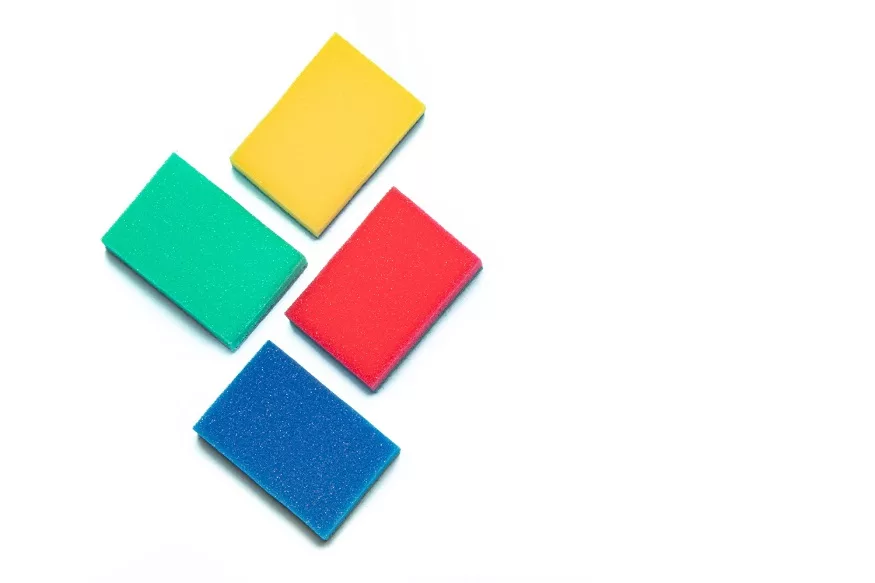A triangle is a closed, two-dimensional shape or polygon in mathematics that has the fewest sides. A Shape with three sides and three angles make up a triangle. The fact that a triangle’s inside angles add up to 180° is its most significant characteristic. Let’s talk about the key requirements for triangle similarity in this article, together with their theorem, proof, and numerous solved cases.
Requirements for Similar Triangles:
It is claimed that two triangles are identical to one another.
- If the angles they relate to are the same.
- If the ratio or proportion of their matching sides is the same.
Similar triangles formula:
Similar triangles have proportional sides. The ratio of corresponding side lengths is equal, expressed as a/b = c/d. Similar triangles formula is crucial for children to know, before that it’s important to understand key factors when assessing similar triangles. Similarity of triangles has four key factors listed below.
Also Read: What is mental math? Understanding Mental Math for All Ages
Similarity of Triangles
The four key factors that are considered when assessing how similar triangles are:
- Angle-Angle (AA) Similarity
- The Side-Side-Side (SSS) Similarity
- Side-Angle-Side (SAS) Similarity
- Side-Side-Angle (SSA) Similarity
Let’s now go over each of these triangle similarity criteria in more depth.
Also Read: What are Cardinal Numbers? Definition, List, Example
AA Criterion for Two Triangles
The Angle-Angle (AA) criterion for similarity of triangles states that “If two angles of one triangle are respectively equal to two angles of another triangle, then the two triangles are similar”.
According to the AA criterion, we can demonstrate that the third angle on both triangles will be equal if the first two angles of one triangle are equal to the first two angles of the other triangle. This can be accomplished by using a triangle’s angle sum attribute.
Example: Triangle ABC and Triangle DEF:
Triangle ABC:
Angle A measures 40 degrees.
Angle B measures 60 degrees.
Triangle DEF:
Angle D measures 40 degrees.
Angle E measures 60 degrees.
In this example, you have two triangles, ABC and DEF, with the following angle measures:
Angle A in Triangle ABC is congruent to Angle D in Triangle DEF (both measure 40 degrees).
Angle B in Triangle ABC is congruent to Angle E in Triangle DEF (both measure 60 degrees).
Based on the AA Similarity Criterion, because two angles of Triangle ABC are congruent to two angles of Triangle DEF, you can conclude that Triangle ABC is similar to Triangle DEF. The order of the angles matters, and in this case, we’ve matched corresponding angles A and D and also B and E. The third angle in both triangles is automatically congruent because the sum of angles in a triangle is always 180 degrees.
This similarity means that the two triangles have the same shape, but they may differ in size. You can use this similarity to establish proportional relationships between their corresponding sides, making it useful for various applications in geometry and trigonometry.
Also Read: 10 ways to Improve Numeracy Skills in Primary Schools
SSS similarity Criterion for Two Triangles
The Side-Side-Side (SSS) criterion for similarity of triangles states that “If in two triangles, sides of one triangle are proportional to (i.e., in the same ratio of) the sides of the other triangle, then their corresponding angles are equal and hence the two triangles are similar figures.”
Example: Consider two triangles, triangle ABC and triangle DEF. You want to determine if they are similar using the SSS criterion.
Triangle ABC:
Side AB = 4 units
Side BC = 6 units
Side CA = 8 units
Triangle DEF:
Side DE = 2 units
Side EF = 3 units
Side FD = 4 units
To check for similarity using the SSS criterion, you need to compare the ratios of the corresponding sides of the two triangles. If the ratios are equal, the triangles are similar figures. In this case:
The ratio of side AB to side DE is 4/2 = 2.
The ratio of side BC to side EF is 6/3 = 2.
The ratio of side CA to side FD is 8/4 = 2.
All three ratios are equal, and they are all equal to 2. Since the ratios of the corresponding sides are the same, you can conclude that triangle ABC is similar to triangle DEF based on the SSS similarity criterion. This means that the two triangles have the same shape but may be different in size.
SSS similarity is a reliable way to establish similarity when the ratios of the corresponding sides are equal, and it allows you to make inferences about the relationships between the angles and sides of similar triangles.
Also Read: What are Composite Numbers
SAS Similarity Criterion for Two Triangles
Side-Angle-Side (SAS) Similarity of triangles states that “If one angle of a triangle is equal to one angle of the other triangle and the sides including these angles are proportional, then the two triangles are similar.”
Example:
Assume you want to find out if Triangle ABC and Triangle DEF, two triangles, are similar using the SAS similarity criterion.
Initially, Triangle ABC is where:
Angle D and Angle A are equivalent (A ≅ D).
Side AB’s length is proportionate to side DE’s length, so AB/DE = 2.
Let’s now examine the angle formed by these two sides. You only know that side AB is in proportion to side DE; angle B in Triangle ABC is not always congruent to angle E in Triangle DEF.
Let’s now examine the second set of matching sides:
Because side DF and side AC are of same length, AC/DF = 3.
Lastly, find the angle that separates these two sides. Triangle ABC’s Angle C and Triangle DEF’s Angle F are congruent (C ≅ F).
According to the SAS similarity standard:
There is just one congruent pair of matching angles (A ≅ D).
There are two proportionate pairings of corresponding sides (AB/DE = 2 and AC/DF = 3).
C ≅ F is the angle formed by these sides.
You can determine that Triangle ABC and Triangle DEF are similar figures since they both satisfy every requirement of the SAS similarity criterion. This indicates that although they could differ in size, the two triangles have the same shape.
Also Read: What is Inch to Centimeter Conversion
SSA Similarity Criterion for Two Triangles
Side-Side-Angle (SSA) Similarity of Triangles states that “Two triangles may be similar if two pairs of corresponding sides are in proportion and the non-included angles are congruent. However, this criterion alone does not ensure similarity. It is contingent upon the lengths and angles in question”
Suppose there are 2 triangles ABC and DEF,
Triangle ABC:
Side AB = 6 units
Side AC = 8 units
Angle A = 50 degrees
Triangle DEF:
Side DE = 3 units
Side DF = 4 units
Angle D = 50 degrees
Now, let’s check if these two triangles are similar based on the SSA criterion:
Side-Side Proportionality: The ratio of the lengths of corresponding sides AB/DE and AC/DF must be equal. Let’s check:
AB/DE = 6/3 = 2
AC/DF = 8/4 = 2
Since the ratios are equal (both equal to 2), the first part of the SSA criterion is satisfied.
Angle Congruence: The non-included angles A and D must be congruent. In this case, both Angle A and Angle D are 50 degrees, and they are indeed congruent.
With both parts of the SSA criterion met, you can conclude that Triangle ABC and Triangle DEF are similar by SSA similarity.
This example illustrates how you can establish the similarity of two triangles based on the SSA criterion, which requires both side proportionality and angle congruence.
In EuroSchool, triangle similarities are taught through interactive lessons and visual aids. Students learn the criteria for similarity and apply them to solve problems. Teachers encourage hands-on activities, group discussions, and real-world examples to help students grasp the concept and its practical applications.











